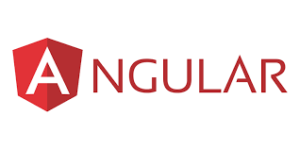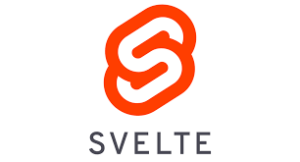JavaScript Framework Comparison
JavaScript frameworks have transformed web development, giving developers strong tools to create dynamic and efficient web applications. With so many options available, selecting the correct framework for your project can be difficult. In this article, we will provide a JavaScript framework comparison of some of the most popular options, including React, Angular, Vue.js, Svelte, and Ember.js. We will assess them based on essential criteria such as usability, performance, community support, and scalability.
Table of Contents
1) React

-
Overview
Facebook created the component-based library React for building user interfaces. It focuses on the application’s display layer and is frequently used alongside other libraries or frameworks for state management and routing in this JavaScript Framework Comparison.
-
Key Features
Virtual DOM: Components are efficiently updated and rendered by minimising direct DOM interactions.
Component-based architecture encourages the reuse of code and modular development.
Strong Ecosystem: Powered by a diverse set of libraries and tools.
-
Pros
high performance thanks to the virtual DOM.
a large community with extensive resources.
flexibility when interacting with other libraries.
-
Cons
a steeper learning curve for beginners.
Additional libraries are required for state management and routing.
-
Best For
projects that require great performance and scalability.
applications with complicated user interfaces.
2) Angular

-
Overview
Google maintains Angular, a full-fledged MVC (Model, View, Controller) framework that offers a comprehensive solution for developing online applications. It has functionality like routing, state management, and form validation.
-
Key Features
Two-Way Data Binding synchronises data between the model and the display.
Dependency injection enhances code maintainability and testing.
Comprehensive Toolkit: Contains everything required for a strong web application.
-
Pros
robust support for large-scale applications.
extensive feature set out of the box.
suitable for enterprise-level applications.
-
Cons
difficult learning curve and complexity.
The framework is heavier than others, which may influence performance.
-
Best For
enterprise-level applications.
projects that require a comprehensive solution with built-in tools.
3) Vue.js

-
Overview
Vue.js is a progressive framework that prioritises the view layer, making it simple to interact with other projects and libraries. It is intended to be progressively adoptable, which means you can use as much or as little of Vue as necessary.
-
Key Features
Reactive Data Binding: Automatically refreshes the view as the model changes.
component-based architecture promotes reusable and maintainable programming.
Simple Integration: Integrates seamlessly with other libraries and existing projects.
-
Pros
a gentle learning curve.
lightweight and quick.
effective documentation and community support.
-
Cons
smaller ecosystem than React and Angular.
limited resources for extremely large-scale applications.
-
Best For
Projects range in size from small to medium.
progressive integration into current programmes.
4) Svelte

-
Overview
Svelte is a relatively new framework that takes a different approach, delegating much of the work to the compile stage. This produces highly efficient and lightweight JavaScript code in the browser.
-
Key Features
Compilation-Time Optimizations: Converts components into extremely efficient JavaScript at compilation time.
No virtual DOM directly manipulates the DOM, resulting in faster performance.
Reactive Programming: By using a reactive paradigm, state management is simplified.
-
Pros
excellent performance thanks to compile-time optimisations.
minimum runtime overhead.
simple to learn and utilise.
-
Cons
a smaller community and ecosystem.
less mature than other frameworks.
-
Best For
high-performance applications.
developers seeking a modern, efficient framework.
5) Ember.js

-
Overview
Ember.js is an opinionated framework with a strong convention-over-configuration approach, designed to assist developers in building ambitious web apps.
-
Key Features
Convention Over Configuration: Reduces the need for boilerplate code by adhering to predefined norms.
Ember CLI: An Effective Command-Line Tool for Productivity.
Strong Community and Support: Comprehensive documentation and community resources.
-
Pros
increased productivity with built-in best practices.
Strong conventions result in consistent codebases.
Comprehensive tools and libraries are included.
-
Cons
can be extremely rigorous for certain projects.
longer initial setup and learning curve.
-
Best For
ambitious tasks that require a disciplined approach.
teams that benefit from established norms and best practices.
Conclusion
Choosing the correct JavaScript framework is determined by your project’s specific requirements, your team’s experience, and your application’s long-term goals. React and Angular are good for large-scale, sophisticated apps, whereas Vue.js is simple and easy to integrate. Svelte delivers cutting-edge performance with a unique approach, whereas Ember.js is ideal for ambitious projects that require strict norms. Evaluate your project’s requirements and team capabilities to determine the best JavaScript framework comparison.
Follow https://www.digitalpluto.co.in/ for the latest updates about web development.





